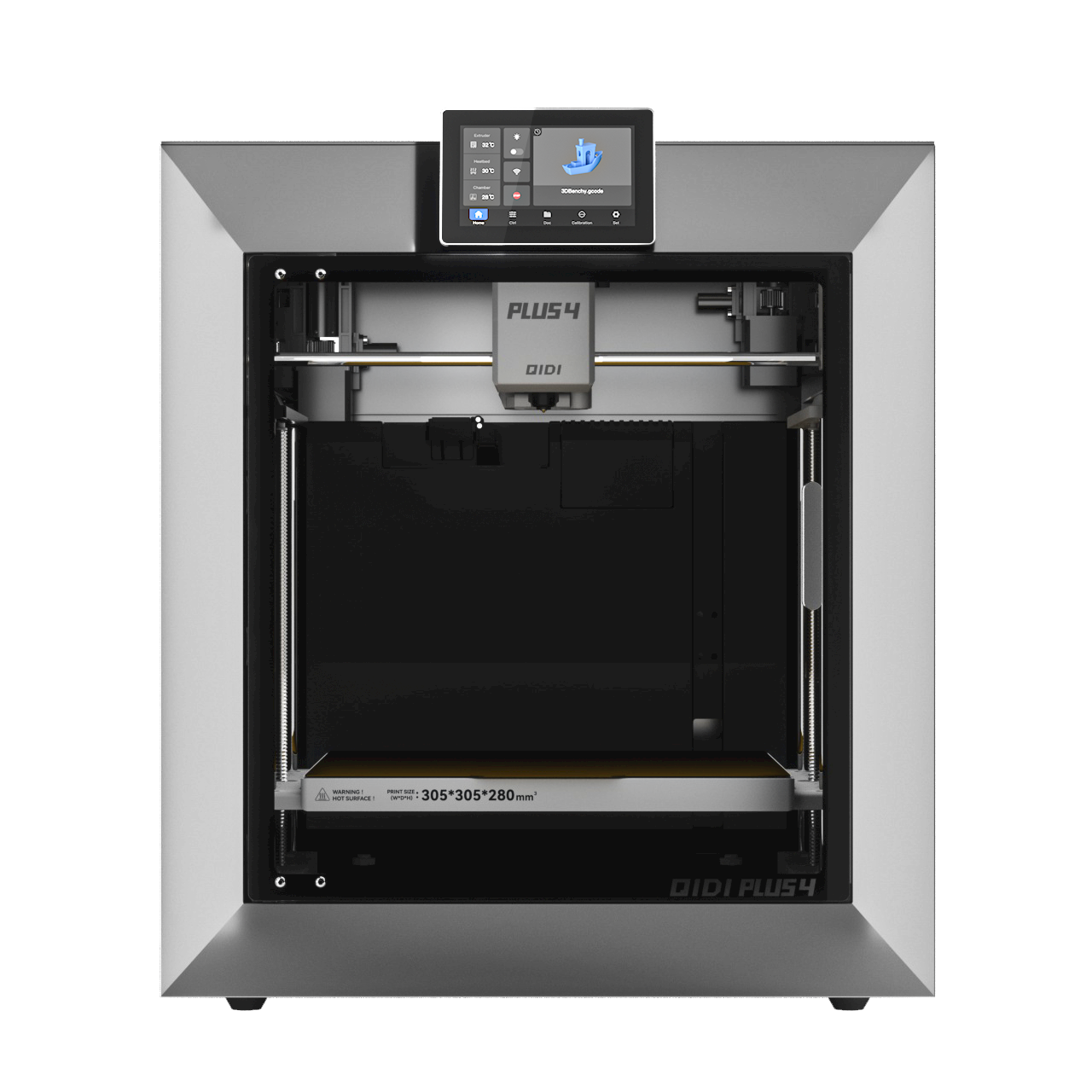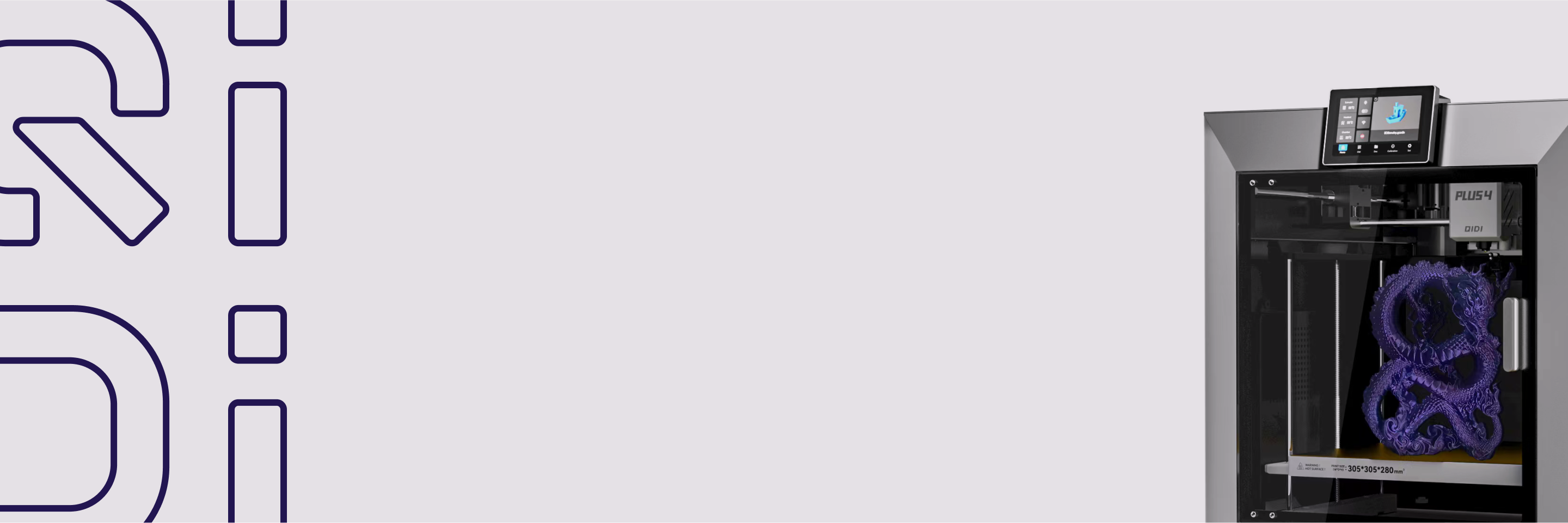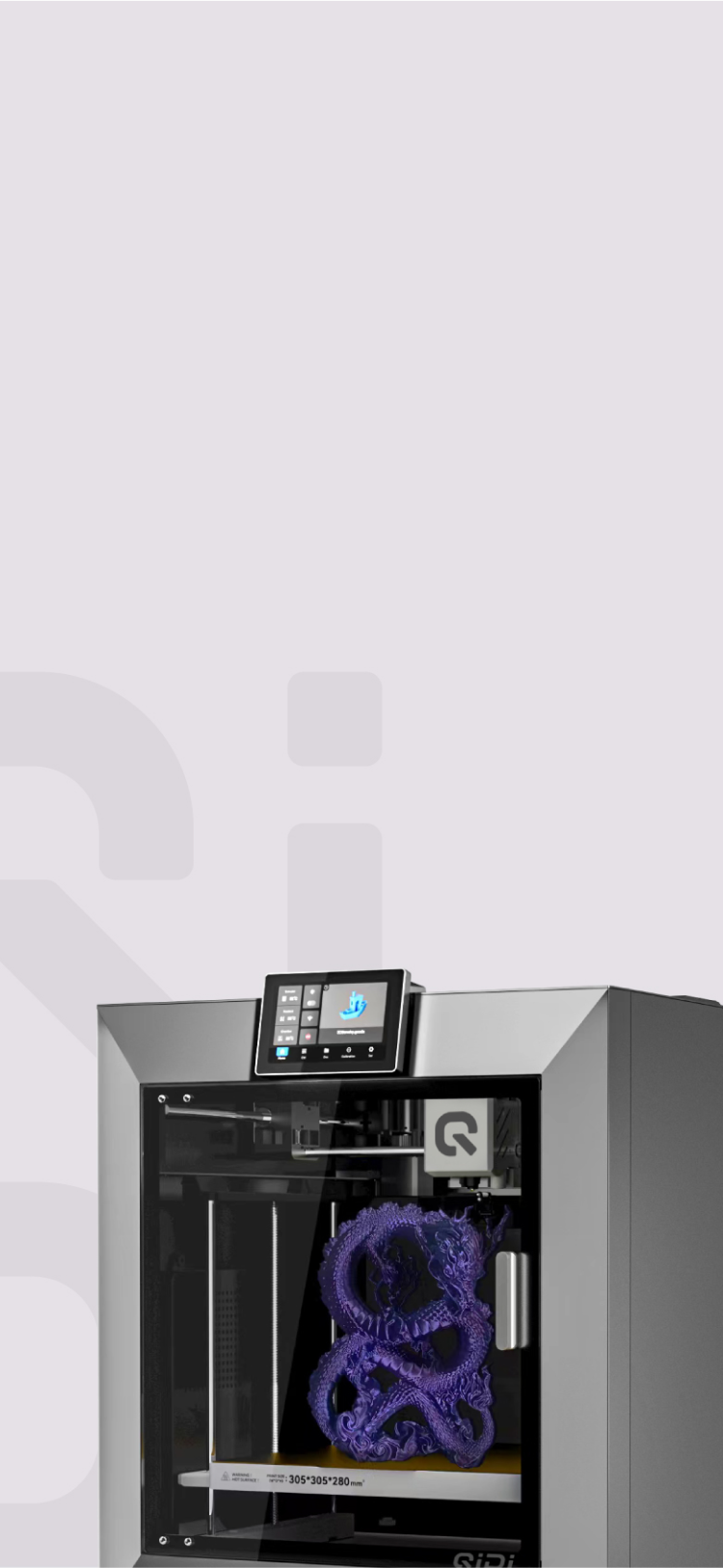직접 압출 대 보우 덴 압출 : 초보자를위한 안내서


압출기는 3D 프린터의 핵심 부품으로, 플라스틱 필라멘트를 핫엔드로 밀어 넣어 녹이는 역할을 합니다. 압출기는 두 가지 주요 설계로 구성됩니다. 직접 압출과 보우덴 압출. 프린터가 사용하는 시스템은 인쇄 속도부터 사용 가능한 필라멘트 종류까지 모든 면에서 프린터 성능에 큰 영향을 미칩니다.이 두 가지 설정 간의 실질적인 차이점을 이해하는 것은 더 나은 인쇄물을 얻고 장비에 대한 정보에 입각한 결정을 내리는 데 필수적입니다.
압출기란 무엇인가?
압출기는 플라스틱으로 만든 "잉크"와 같은 필라멘트를 핫엔드 쪽으로 이동시키고, 핫엔드에서 녹아서 프린트 베드 위로 떨어집니다. 그것은 가지고있다 스테퍼 모터 전력을 공급하기 위해 필라멘트를 고정하고 움직이는 기어와 "콜드 엔드"라고 알려진 견고한 하우징이 있습니다. 압출기의 역할은 재료가 원활하게 움직일 수 있도록 강력하고 통제된 힘을 제공하는 것이며, 이는 성공적인 인쇄에 중요합니다.
직접 및 보우덴 설정의 기본적인 차이점은 압출기 모터의 물리적 위치입니다.
- 직접 압출 시스템에서는 모터가 움직이는 프린트 헤드에 직접 장착됩니다.
- 보우덴 시스템에서는 모터가 프린트 헤드에서 떨어진 프린터의 고정 프레임에 장착됩니다.
이처럼 간단해 보이는 설계 변형은 프린터의 속도, 처리할 수 있는 재료, 심지어 일상적인 유지 관리에 직접적인 영향을 미치는 일련의 중요한 균형으로 이어집니다.

직접 압출: 짧은 경로, 강력한 제어
직접 압출(Direct Extrusion) (또는 "직접 구동"이라고도 함) 필라멘트 공급 메커니즘과 핫엔드를 빌드 영역 전체에서 함께 움직이는 단일 장치로 통합했습니다.
직접 압출 작동 방식
구동 기어에서 용융 구역까지 직접 구동 장치의 필라멘트 경로는 다음과 같습니다. 길이 30~50mm압출기 모터는 핫엔드 바로 위나 옆에 장착할 수 있어 전체 크기를 줄일 수 있습니다. 필라멘트는 구동 기어에 의해 짧고 단단한 튜브를 통과하여 히트 브레이크에 도달합니다. 이 시스템은 모터와 용융 영역 사이의 최소 거리에 의해 정의됩니다.
성능 이점
직접 압출은 세 가지 중요한 이점을 제공합니다.
- 즉각적인 반응 - 모터 명령은 밀리초 단위로 필라멘트 이동을 처리합니다. 이러한 즉각적인 반응 덕분에 복잡한 인쇄 작업 중에도 정밀한 시작/정지 제어가 가능합니다.
- 뛰어난 수축력 - 짧은 필라멘트 경로로 인해 0.5-2mm의 수축 거리가 효과적으로 허용됩니다. 스며드는 것을 방지하다모터는 필라멘트에 저장된 에너지와 싸우지 않고도 빠르게 방향을 바꿀 수 있습니다.
- 유연한 필라멘트 호환성 - 제한된 경로는 부드러운 소재의 휘어짐이나 압축을 방지합니다. TPU 및 기타 엘라스토머는 85A의 낮은 쇼어 경도에서도 안정적으로 공급됩니다.
체중 관련 제한
통합형 설계는 모터 크기와 구조에 따라 이동 질량에 200~400g을 추가합니다. 이러한 추가 중량은 다음과 같은 몇 가지 문제를 야기합니다.
- 감소된 가속도 - 일반적인 가속도 값 범위는 가벼운 시스템의 경우 3000-5000mm/s²에 비해 500-2000mm/s²입니다.
- 진동 감수성 - 질량이 높을수록 공명이 증폭되며 특히 방향이 바뀔 때 더욱 그렇습니다.
- 속도 제한 - 인쇄 속도 일반적으로 고품질 결과를 위해 최대 60-100mm/s인 반면 가벼운 대안의 경우 150-200mm/s입니다.
엔지니어는 특정 응용 프로그램을 설계할 때 이러한 무게 감소와 시스템의 정밀성 이점 사이에서 균형을 맞춰야 합니다.
보우덴 압출: 원격 모터, 고속 모션
보우덴 압출은 모터를 핫엔드에서 분리하여 직접 제어보다 가벼운 모션을 우선시합니다.
Bowden Extrusion 작동 방식
Bowden 방식은 압출기 모터를 프린터의 고정 프레임에 부착합니다., 일반적으로 사이입니다 300mm와 800mm 핫엔드에서. 폴리테트라플루오로에틸렌(PTFE) 튜브는 이 부분들을 연결하고 고정 모터에서 움직이는 프린트 헤드로 필라멘트를 이동시킵니다. 튜브의 내경은 필라멘트의 너비와 거의 같습니다.일반적으로 1.75mm 필라멘트의 경우 2.0mm—제한된 경로를 만듭니다. 이렇게 분할하면 전체 모션 시스템에서 모터 무게가 제거됩니다.
성능 이점
원격 모터 배치는 상당한 이점을 제공합니다.
- 최소 이동 질량 - 모터 없이 프린트 헤드의 무게는 50~150그램에 불과하여 3000~8000mm/s²의 가속이 가능합니다.
- 고속 기능 - 관성 감소로 표면 품질을 유지하면서 150-300mm/s의 인쇄 속도가 가능합니다.
- 진동 아티팩트 감소 - 질량 감소로 방향 변경 시 울림과 고스팅이 최소화되어 더 깨끗한 수직 표면과 날카로운 모서리가 생성됩니다.
시스템 제한 사항
확장된 필라멘트 경로는 세 가지 주요 과제를 야기합니다.
- 압축 및 히스테리시스 - 300~800mm 필라멘트 기둥은 스프링 역할을 합니다. 압출 시 필라멘트는 노즐에 도달하기 전에 압축됩니다. 수축 시, 이렇게 저장된 에너지는 필라멘트가 실제로 빠져나가기 전에 소실되어야 합니다.
- 마찰 손실 - 필라멘트와 튜브 벽 사이의 접촉은 튜브 길이, 곡률, 그리고 재료 특성에 따라 달라지는 저항을 발생시킵니다. 이 마찰은 필라멘트가 부드러울수록 기하급수적으로 증가합니다.
- 응답 지연 - 명령이 시스템 전체에 전파되는 데 0.1~0.5초가 소요되는 반면, 직접 시스템에서는 거의 즉각적인 응답이 이루어집니다. 이러한 지연으로 인해 더 긴 후퇴 거리(4~8mm)와 압력 진전 보상이 필요합니다.
이러한 특성으로 인해 Bowden 시스템은 정밀한 압출 제어 및 유연한 필라멘트에 어려움을 겪는 동안 단단한 재료를 사용한 고속 인쇄에서 탁월한 성능을 발휘합니다..
직접 압출 vs. 보우덴 압출: 어느 쪽이 더 유리할까?
실제 인쇄에서 디자인의 차이가 어떻게 영향을 미치는지 알고 있다면 자신의 필요에 맞는 가장 좋은 방법을 선택할 수 있을 것입니다.
Bowden은 50-100% 더 빠르게 인쇄합니다
Bowden 시스템은 원시 속도에서 탁월합니다. 일반적으로 직접 구동 설정보다 50-100% 더 빠르게 인쇄합니다.가벼운 핫엔드는 150~200mm/s의 치수 정확도를 유지하는 반면, 직접 구동 시스템은 60~100mm/s에서 최적의 결과를 생성합니다. 그러나 Direct Drive는 어떤 속도에서도 보다 일관된 압출을 제공합니다.광범위한 조정 없이도 더 매끄러운 표면 마감과 더 정확한 치수를 생산합니다.
선택은 우선순위에 따라 달라집니다. 시간이 가장 중요한 신속한 프로토타입 제작 및 대형 인쇄를 위한 Bowden, 세부 모델, 기계 부품 또는 치수 정밀도가 요구되는 모든 응용 프로그램을 위한 Direct Drive.
Direct Drive 핸들은 소프트 TPU만 사용합니다.
유연한 필라멘트를 인쇄할 때 시스템은 크게 달라집니다.
직접 구동 기능:
- 85A 쇼어 경도까지 TPU를 안정적으로 인쇄합니다.
- 부드러운 소재로 일관된 흐름 유지
- 특별한 수정이나 설정이 필요하지 않습니다.
보우덴 제한 사항:
- 보다 부드러운 것에는 어려움을 겪습니다. 95A TPU
- 유연한 경우 20mm/s 미만의 속도가 필요합니다.
- 튜브 수정이나 제약이 종종 필요합니다.
- 조심스럽게 조정하더라도 좌굴 및 걸림이 발생하기 쉽습니다.
강성 재료의 경우 (인민해방군, PETG, ABS), 두 시스템 모두 비슷한 성능을 보입니다. 하지만 개스킷, 휴대폰 케이스, 고무 부품 등을 인쇄하려는 사람에게는 Direct Drive가 필수적입니다.

직접 구동은 75% 더 적은 수축이 필요합니다.
직접 구동 시스템은 누출을 막기 위해 0.5~2mm만 수축하면 됩니다.그리고 모터 명령에 즉시 반응합니다. 이렇게 조금만 움직여도 필라멘트가 손상되지 않고 압출기 부품이 마모되는 것을 방지합니다.
Bowden 시스템은 튜브의 유연성과 마찰을 고려하여 4~8mm의 수축 거리가 필요합니다.. 최상의 설정을 찾는 것은 다음 사이의 균형을 찾는 것을 의미합니다. 수축 거리속도, 온도 등 초보자에게는 어려울 수 있는 요소들이 있습니다. 잘 튜닝된 보우덴 프린터는 이동 거리가 많은 복잡한 형상에서 스트링 현상이 나타날 수 있습니다.
보우덴 튜브는 6~12개월마다 교체해야 합니다.
보우덴 유지 관리 지점:
- 노즐 교체를 위한 쉬운 핫엔드 접근
- PTFE 튜브는 시간이 지남에 따라 성능이 저하됩니다(6~12개월 교체 주기)
- 공압 커플러가 느슨해져 간헐적인 과소 압출이 발생할 수 있습니다.
- 튜브는 막힘을 방지하기 위해 정사각형으로 자르고 완전히 끼워야 합니다.
직접 구동 유지 관리 지점:
- 컴팩트한 조립으로 심층 세척을 위해 부분 분해가 필요합니다.
- 모터 열이 핫엔드에 가까워서 열이 더 빨리 흐를 가능성이 있습니다.
- 수축 시간이 짧아 압출기 기어 청소가 더 자주 필요함
- 프린트 헤드 어셈블리의 더 많은 이동 부품
두 시스템 모두 정기적인 주의가 필요하지만, 보우덴 시스템은 필라멘트 경로를 따라 여러 잠재적인 실패 지점이 있기 때문에 더 자주 문제 해결을 해야 하는 경우가 많습니다.
직접 압출 vs. 보우덴 압출: 첫 3D 프린터를 선택할 때 어떤 것을 선택해야 할까요?
그렇다면 어떤 시스템이 올바른 시작점일까요? 답은 전적으로 취미에 대한 여러분의 구체적인 목표와 관심사에 달려 있습니다.
다음 중 원하는 경우 직접 구동을 선택하세요:
- 유연한 소재 - TPU에 필수 실리콘또는 경도 95A 이하의 모든 재료
- 최소한의 설정 번거로움 - 기본 보정으로 바로 사용 가능
- 처음부터 깨끗한 인쇄물 - 짧은 수축으로 끝없는 튜닝 없이 스트링잉이 줄어듭니다.
- 일관된 품질 - 기계 부품 또는 세부적인 미니어처에 대한 안정적인 압출 제어
- 미래의 다재다능함 - 기술을 확장하면서 가장 광범위한 재료를 처리합니다.
다음 중 원하는 경우 Bowden을 선택하세요:
- 빠른 제작 - 대형 물체의 경우 4~6시간이 걸리는 반면, 2~3시간 만에 인쇄 가능
- 초기 비용 절감 - 일반적으로 비슷한 기능에 비해 50~150달러 저렴
- 표준 재료만 사용 가능 - PLA를 고수하는 경우에 적합합니다. PETG, 또는 ABS
- 학습 경험 - Bowden 시스템 튜닝을 통해 귀중한 문제 해결 기술을 배울 수 있습니다.
- 대용량 인쇄 - 더 가벼운 헤드로 안정성 문제 없이 더 큰 프레임을 인쇄할 수 있습니다.
기술이 격차를 메우고 있습니다
새로운 기술로 인해 이러한 시스템 간의 경계가 예전보다 덜 명확해졌습니다.으악, 더 가벼운 스트레이트 압출기의 무게는 150g 미만인데, 이는 기존 모델보다 절반 정도입니다.이를 통해 이전에는 보우덴 방식으로만 가능했던 속도가 가능해졌습니다. 반면, 200~300mm 튜브를 사용하는 더 짧은 보우덴 시스템은 속도 이점을 대부분 유지하면서 반응 시간을 개선합니다. 고급 소프트웨어 기능(예: 입력 셰이핑) 덕분에 중량 직접 시스템은 품질 손실 없이 150mm/s 이상의 속도로 인쇄할 수 있습니다.기본적인 물리학에는 변화가 없지만, 이러한 기술적 변화로 인해 두 시스템 모두 그 어느 때보다 더 많은 작업을 수행할 수 있게 되었습니다.
시스템을 알고 더 나은 인쇄를 하세요!
다이렉트 드라이브는 더 나은 제어력을 위해 속도를 포기합니다. 보우덴은 더 빠른 속도를 위해 제어력을 포기합니다..둘 다 유용한 도구이지만, 어느 쪽이 반드시 더 나은 것은 아닙니다. 프린터의 인쇄 방식을 알고 있다면 설정을 적절히 변경하고, 프린터에 적합한 재료를 선택하고, 문제를 신속하게 해결할 수 있습니다. 이 정보는 다음과 같은 경우에 필수적입니다. 3D 프린터 일하다.


 Q2
Q2





